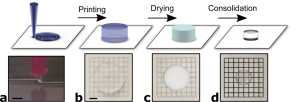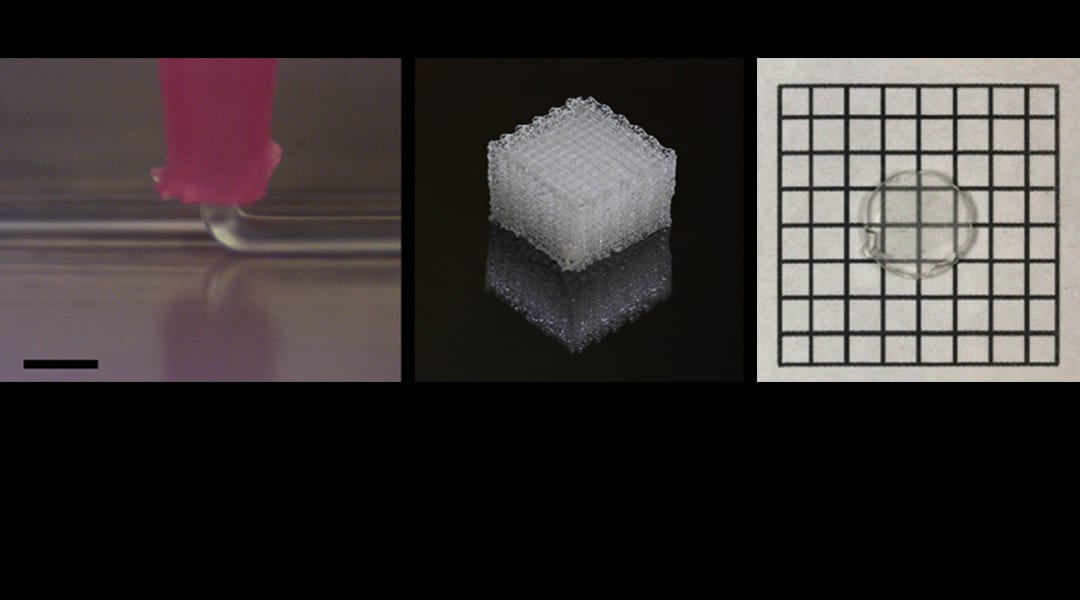Additive manufacturing, or 3D printing, has been a transformative technology in many fields. There has been always a drive to achieve features in glass at submillimetre length scales or in configurations that are difficult to achieve with conventional glass-processing techniques.
In a recent article published in Advanced Materials, researchers from Lawrence Livermore National Laboratory, USA report a new two-step method for 3D printing of transparent glass structures at scale lengths not previously demonstrated. They formulated special pastes that contain silica particles suspended in a liquid and can be squeezed into filaments that hold their shape, much like toothpaste from a tube. To build the desired 3D structure, filaments of the silica paste are formed and deposited in a highly-controlled manner using a 3D printing process known as direct ink writing, commonly used to print plastics or ceramics. The printed structures are then dried and sintered at temperatures well below the silica melting point to form amorphous, solid, transparent glass structures.

The inks are tailored to have optimal drying and rheological properties, and when combined with an appropriate heat treatment process, enable the creation of fully dense glass parts such as monoliths, scaffolds, and even 3D printed microfluidic glass part.
This two-step approach enables the formation of a variety of glass structures, ranging from completely solid components that both look and behave like window glass, to open mesh structures built from fine glass fibers just over the width of a human hair. In addition, the ability to produce glass using the 3D printing technique opens the door to the possibility of creating new glass components that contain both compositional and structural gradients, enabling glass microfluidic devices with new functionality, as well as new types of gradient index optics that can be made flat, saving money and time on polishing and finishing.

















